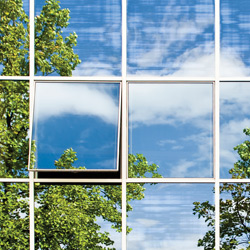
Everyone is talking about alternative energy, green buildings and environmental sustainability. Business has long been a part of the conversation, and evolving federal tax incentives are making an even stronger business case for going green.
Since 2005, commercial building owners have been able to claim a tax deduction for upgrades to existing buildings or construction of new buildings that resulted in significant energy savings. It’s called a Section 179D deduction, after the section of the tax code in which it appears.
Until recently, those who only became aware of the deduction in recent years could go back and claim it by amending previous years' returns. But thanks to a new ruling by the IRS, the benefits can now be claimed on the current year’s tax return. It is no longer necessary to amend previous returns if IRS Form 3115 is filed to change the business’s accounting method for years back to 2006.
Qualifying for the Deduction
The Section 179D energy-efficient building tax deduction is available to the owner or lessee of a commercial building (such as office buildings, retail space, restaurants, manufacturing facilities and warehouses), for qualified new construction, renovations or additions. Single-family homes, multifamily structures under four stories and mobile or modular homes do not qualify.
The designers of government buildings (such as schools, universities, courthouses, jails, military installations and office buildings), including architects, engineers, contractors and energy service providers, may also qualify for the deduction if the government agency assigns the tax deduction to them.
How It Works
The owner of a commercial building can qualify for deductions of up to $1.80 per square foot when the building is constructed or renovated to reduce annual energy costs by 50 percent or more compared to a building standard called ASHRAE 90.1-2001. Energy savings must be achieved by constructing or retrofitting the envelope (exterior walls, floor, roof, doors, windows); interior lighting; or heating, cooling and hot water systems. These systems must be placed in service after December 31, 2005, and before January 1, 2014.
A building that does not meet the 50-percent savings requirement may be defined as a “partially qualified property” and may still qualify for a smaller deduction. In the past, it has been a challenge for a building to be fully qualified, but new technologies are putting it within reach.
Before the 179D deduction can be claimed, the property owner must obtain independent certification of energy savings from a qualified, licensed professional engineer utilizing software qualified by the Department of Energy.
Join the Minority
Only a small fraction of the businesses that may qualify for the 179D deduction actually claim it. In times like these, when every bit of cash is important, saving taxes would be an optimal way to improve the return on building renovations or energy-efficient new construction. In addition to financial gains, there can be softer benefits to green companies that could pay dividends in the future. iBi
Mark Colvin is a senior manager in the Peoria office of Clifton Gunderson. He can be reached at (309) 495-8754 or Mark.Colvin@cliftoncpa.com.

